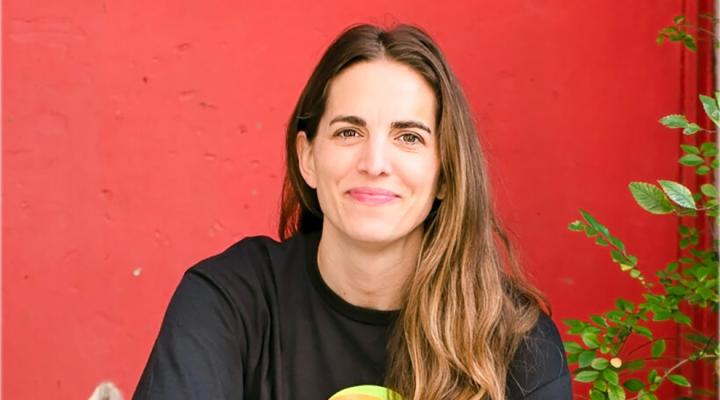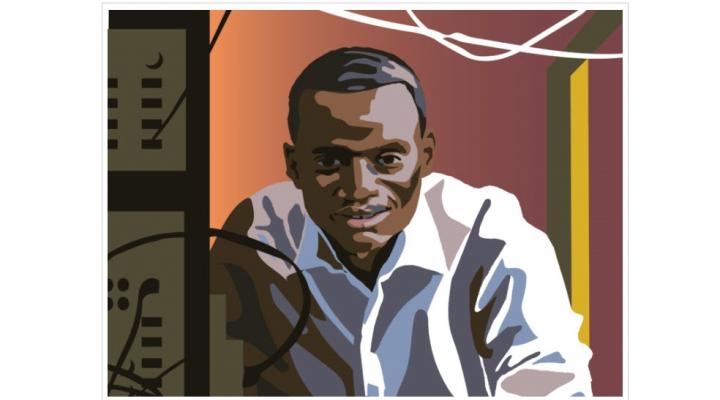When Praveen Agarwal graduated from the Indian Institute of Technology in Bombay, he knew he wanted to earn a Ph.D. in chemical engineering doing polymer research.
“I remember one quote that one of my undergrad professors said. It’s actually very true that if you look in any direction you’ll find polymers,” said the 27-year-old from Agra, India.
Agarwal chose Cornell and ended up being the first student in KAUST-CU Co-director Lynden Archer’s research group to work with a new kind of hybrid material created here: nanoscale ionic materials (NIMs). He has published four papers to date, with more in the works. “Cornell, I thought it was a great place to do polymers. I had a couple of offers. I think I made a good choice,” said Agarwal. “Right from my beginning, I’ve been working with NIMs.”
Most of Agarwal’s work has been on the fundamental characterization and rheology of NIMs. “It’s more related to the carbon capture thrust, but not directly,” he said. “Fundamental understanding helps all thrusts.”
Because NIMs are solventless fluids of organic polymers bonded to inorganic nanoparticles, understanding their unusual behavior can be tricky. “To understand NIMs we need to know about colloidal physics and polymer physics and being experimentalists we also need to know the chemistry of both colloids and polymers,” said Agarwal. “It was a challenging problem but I think it has been a great experience because I learned a lot, about so many things.”
The key to Agarwal’s success, said Archer, is figuring out how to make NIMs that are as pure as possible. “With chemistry it’s not straightforward to avoid the odd ligand not attached to a particle from acting like a conventional suspended medium,” he said. “Praveen has been quite obsessed with getting a system that looks like the model, so we can understand what the properties of self-suspended suspensions really are. Such materials have never been seen before. He made them and found that they have some really remarkable properties.”
Agarwal’s first discovery led to a method that can predict the dynamics of NIMs over very long time scales. This is an important tool because NIMs can flow as slowly as glass. “I found that if we strain them, we can speed up their dynamics,” said Agarwal. “It’s an unusual finding experimentally. But we can even predict this behavior using theory.”
It was just before Winter break when Agarwal and Archer noticed the strain’s effect on NIMs. Agarwal had a flight home booked the next day. “I didn’t have a Christmas because this was on my mind,” said Archer. “It’s rare you have something this dramatic. I think I probably took Christmas Day off, but I was in the lab the day he was leaving because I wanted to know if this was a fluke—can this be reproduced in other systems? And it turns out it can.”
Archer and Agarwal subsequently showed that their findings were actually predicted by the theory of soft glass. “That caught a lot of people’s attention,” said Archer. “Nobody knew this was buried in that theory, but it predicts the same behavior we observed experimentally.”
Another unusual physical property Agarwal discovered when working with pure NIMs is that they become more solid when at higher temperatures. “It’s counterintuitive,” he said. “It’s primarily because of the attached polymer chains.”
While investigating the chemical properties of NIMs, Agarwal extended the NIMs platform to make polymer networks. “Its mechanical properties are way better than anything now because the connecting points are nanoparticles instead of small molecules,” Agarwal explained.
Agarwal says such polymer networks are also shape memory polymers that may find applications in health care. Biomedical implants made of such materials could be inserted via minimally invasive arthroscopic surgery, then reform into a desired shape. “The moment I made these networks from NIMs, I took my sample out from a mold and it became like an elastic solid from a gel,” he said. “When I told Professor Archer he was very excited.”
The variety of Agarwal’s research is due to Archer’s openness to exploring new directions. “The nice thing about Professor Archer, if you find something interesting experimentally, he will want you to find out more,” said Agarwal. “You have to go out of the box and try new things.”
Which isn’t always easy. In the beginning, says Agarwal, his NIMs research seemed to be going nowhere. “It was an entirely new field. We were just trying to figure things out,” he said. “Overall it has been a great time for me. I think we are getting there.”





